This Is Why Einstein Knew That Gravity Must Bend Light
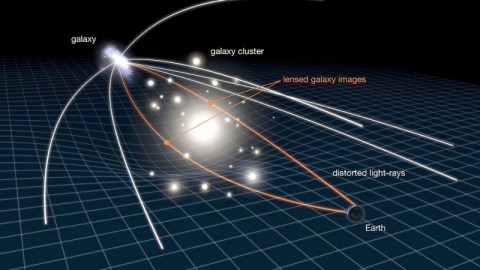
General Relativity had to be right. Here’s how we knew.
What happens to light when it passes near a large mass? Does it simply continue in a straight line, undeflected from its original path? Does it experience a force owing to the gravitational effects of the matter nearby? And if so, what is the magnitude of the force it experiences?
These questions cut to the very heart of how gravity works. This year, 2019, marks the 100th anniversary of General Relativity’s confirmation. Two independent teams undertook a successful expedition to measure the positions of stars near the limb of the Sun during the total solar eclipse of May 29, 1919. Through the highest-quality observations that technology permitted at the time, they determined whether that distant starlight was bent by the Sun’s gravity, and by how much. It was a result that shocked many, but Einstein already knew what the answer would be. Here’s how.
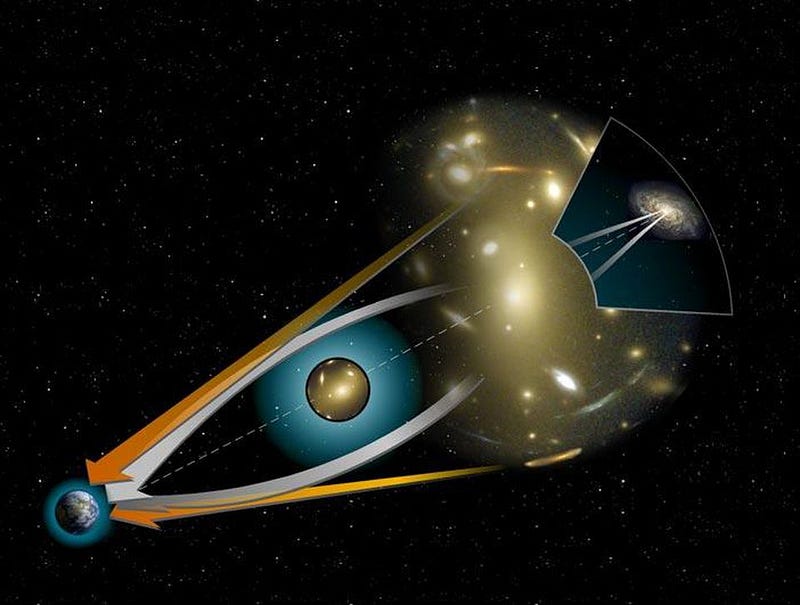
Imagine you’re in an elevator, and all the doors are closed. You can hear the motors running externally, but you can’t see what’s going on outside of you. All you know is what you can feel, and what you can see internal to the elevator car. Now, you try and ask the most physically meaningful questions that you can. How fast are you moving, and in what direction? Is your motion changing or not? And if so, what’s causing it?
From inside the elevator, with no way to view what’s occurring outside, you cannot know the answers to pretty much any of these questions. According to the rules of relativity — going back way before Einstein, all the way to Galileo — you cannot tell whether you’re in motion or not.

The laws of physics don’t depend on your velocity, and there are no measurements you can perform solely from inside the elevator that will tell you what that velocity is relative to the outside world. Your elevator could be moving up, down, horizontally, or in any direction at all; unless there was a change in its motion, there would be no physical effect on anything that occurred inside the elevator.
This is the principle of relativity: that all inertial (non-accelerating) frames of reference obey the same physical laws and equations. The properties of the Universe inside a stationary elevator and an elevator in constant motion are indistinguishable to any observer. Only if you can see out, and compare your motion to something external, will there be any way to tell how you’re moving.
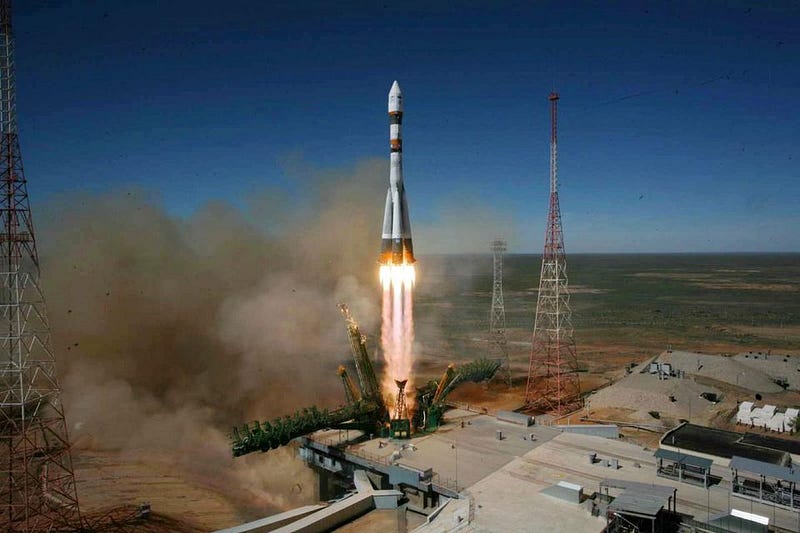
The notion that there is no such thing as absolute motion is at the heart of special relativity: all non-accelerating observers can lay equal claim to their perspective being the correct one.
If the elevator accelerates, however, this story changes dramatically. An elevator that accelerates upwards at 9.8 m/s2 will see everything within it be accelerated downward towards the floor at that same rate: 9.8 m/s2. When you’re in a vehicle that rapidly accelerates (and you feel yourself pushed back into your seat) or decelerates (that thrusts you forward), you’re experiencing similar effects to what someone inside the accelerating elevator will feel. It’s the changes in motion — the acceleration — that cause what you experience as a force, just like what you’d expect from Newton’s most famous equation: F = ma.

Now, let’s come to a different problem. If you were in that very same elevator, but instead of it accelerating, it were sitting stationary on the surface of the Earth, what would you experience from inside?
The force of gravity from the Earth pulls everything down with that same acceleration — 9.8 m/s2 — at our planet’s surface. If the elevator is stationary on the ground, the gravitation of the Earth still causes every object inside to accelerate downwards at 9.8 m/s2: the same result as if the elevator were accelerating upwards at that rate. To someone inside the elevator with no way to view the outside world, and no way to know whether they were stationary but in the presence of a gravitational field or accelerating due to an external thrust, these scenarios would be identical.
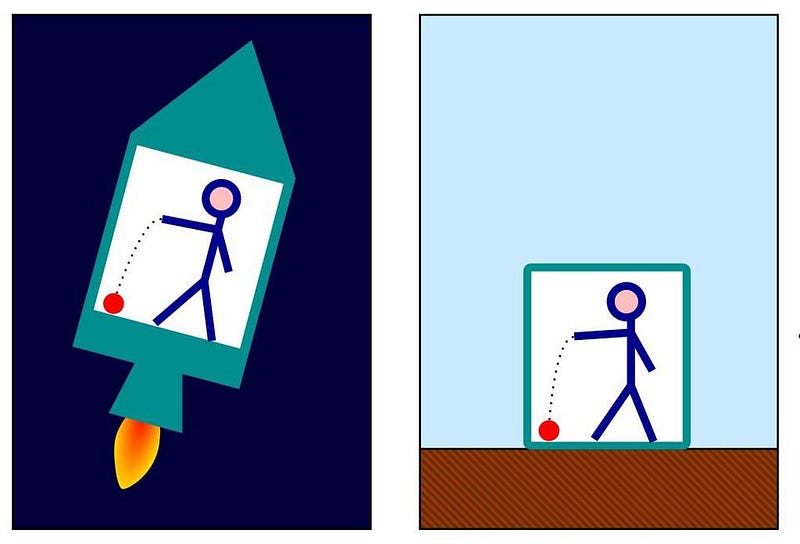
Now, think about what would happen if you allowed a light beam from outside to enter one side of the elevator through a hole, and observed where it struck the wall on the other side. This would depend on both your velocity and acceleration relative to the outside light source. In particular:
- If there were no relative motion or relative acceleration between the elevator and the light source, the light beam would appear to travel straight across.
- If there were relative motion (velocity) but no relative acceleration, the light beam would move in a straight line, but would be displaced from going directly across.
- If there were relative acceleration, the light beam would follow a curved path, with the magnitude of curvature determined by the magnitude of the acceleration.
That last case, however, would describe an accelerating elevator and a stationary elevator in a gravitational field equally well.
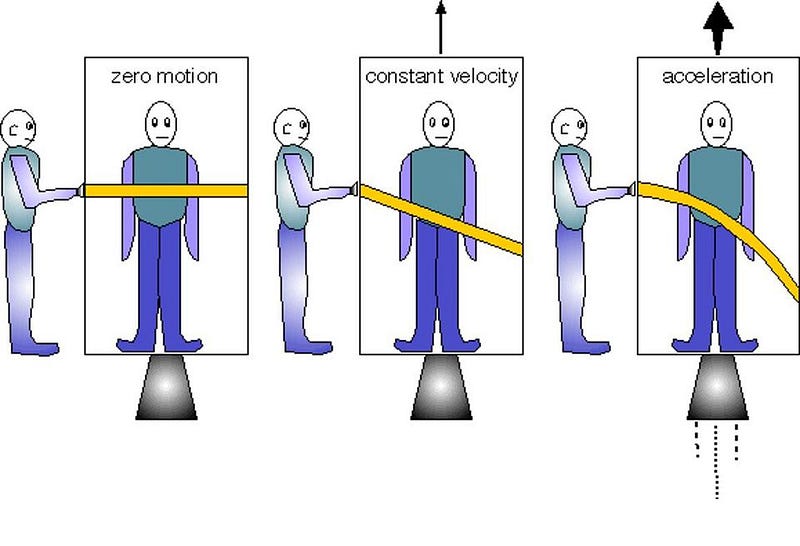
This is the basis of Einstein’s equivalence principle: the idea that an observer cannot distinguish between an acceleration caused by gravitational or inertial (thrust) effects. In the extreme case, jumping off of a building, in the absence of air resistance, would feel the same as being completely weightless.
The astronauts aboard the International Space Station, for example, experience complete weightlessness, even though the Earth is accelerating them towards its center with about 90% of the force we experience here on its surface. Einstein later referred to this realization, which struck him in 1911, as his happiest thought. It was this idea that would lead him, after four years of further development, to publish the General theory of Relativity.
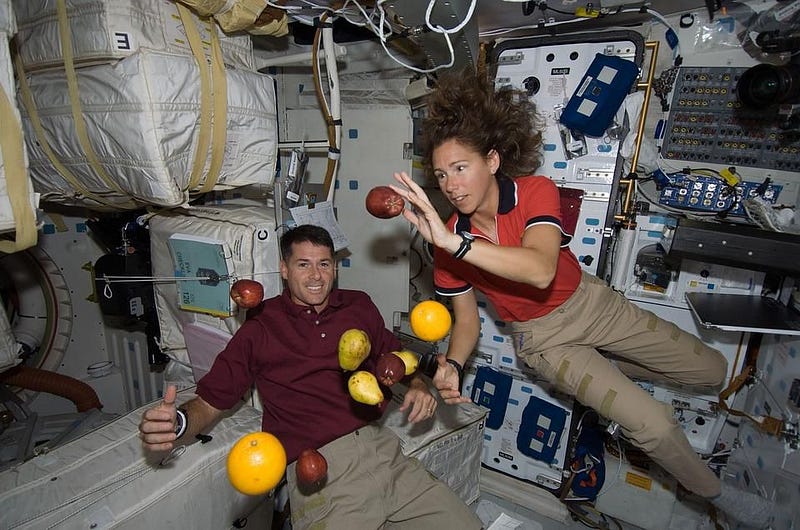
The conclusion to Einstein’s thought experiment was irrefutable. Whatever the gravitational effects are at a certain location in space — whatever accelerations they induce — they will affect light as well. Just as surely as accelerating your elevator with thrust will cause a light ray to deflect, accelerating it by having it be in the proximity of a gravitational mass will cause that same deflection.
Therefore, Einstein reasoned, it would not only be possible to predict that light rays cannot travel along a straight path when they’re in a gravitational field, but the magnitude of deflection could be calculated simply by knowing what the strength of the gravitational effects in the vicinity of that mass were.
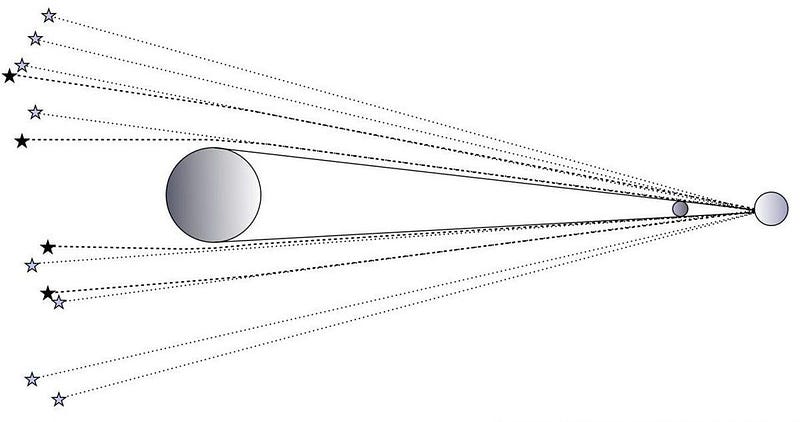
Einstein had his happiest thought in 1911, and by 1915’s end had completed the formulation of his General theory of Relativity, which would lead to an explicit prediction for exactly how much light should deflect by for stars that experienced particular angular separations from the Sun.
This couldn’t be observed, of course, under normal conditions, since one cannot observe stars during the day. But when a total solar eclipse occurs, particularly if the eclipse is of a long duration and the skies become very dark, stars may reveal themselves to a dedicated observer. There was a total solar eclipse in 1916, but World War I prevented the critical observations from being taken. The 1918 eclipse occurred over the continental United States, but clouds intervened, disrupting the US Naval Observatory’s plans.
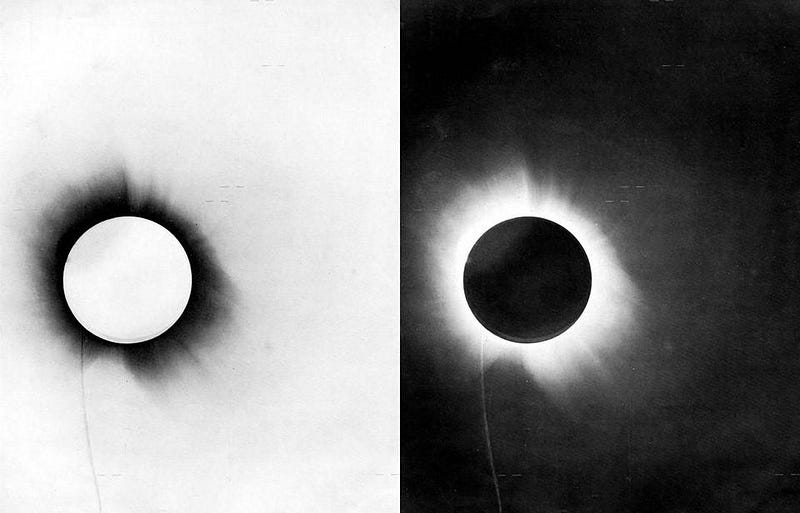
In 1919, however, a very long eclipse was slated to pass over South America and Africa, and Sir Arthur Eddington of Great Britain was prepared. With two teams in Sobral, Brazil, and Principe, Africa, and an eclipse containing around six minutes of totality, this was the ideal testing ground for Einstein’s theory. Although controversy surrounded the results for many years, the results were consistent with Einstein’s predictions and have stood the test of time and further scrutiny. In the aftermath of the observations, Eddington composed the following parody poem:
Oh leave the Wise our measures to collate
One thing at least is certain, LIGHT has WEIGHT
One thing is certain, and the rest debate –
Light-rays, when near the Sun, DO NOT GO STRAIGHT
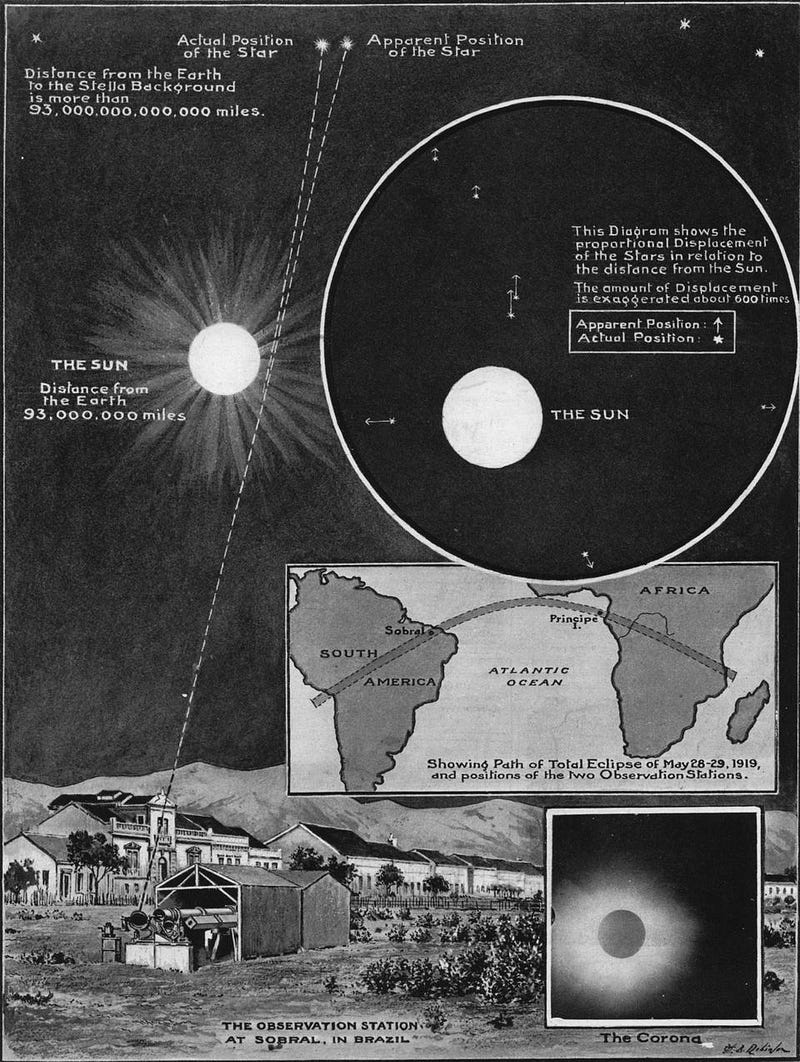
While it is always vital to perform the critical experiment or observation capable of validating or contradicting your theoretical predictions, Einstein had no doubt that observations of starlight passing near a significant mass, such as the Sun, would show that light rays were indeed bent by gravity. Just as he could be certain that gravitation causes accelerations, there was no way around the implication that light, which would appear to bend for an accelerated observer, must also bend due to the effects of gravity.
On May 29, 2019, humanity will celebrate the 100th anniversary of the confirmation of General Relativity, and 100 years of gravity bending light. Though many had their doubts on that day, Einstein wasn’t one of them. As long as falling objects accelerate due to gravity, we have every reason to believe that gravity bends light, too.
Ethan Siegel is the author of Beyond the Galaxy and Treknology. You can pre-order his third book, currently in development: the Encyclopaedia Cosmologica.





